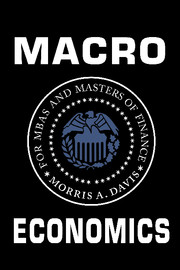'This is a gem of a book. It covers the many things we really know about macroeconomics, avoiding pointless coverage of ancient controversies. It uses just a little algebra and microeconomics to give surprising answers to important questions, and to solve all sorts of problems that confuse people with verbal analysis. In this way, it is a wonderful introduction to the tools and economic thinking of modern macroeconomics.'
John H. Cochrane - University of Chicago
'This is one of the best introductions to modern macroeconomics available. By going through page by page with pen and paper at hand, a reader will naturally begin to understand how modern economics helps addressing substantive questions, from economic growth to business cycles and monetary policy.'
Nobuhiro Kiyotaki - Princeton University
'In the concluding section of my Nobel lecture I lament the problem in macro that, 'in the past 20 years, the gap between research and textbooks has grown wider and wider'. Almost all interesting macroeconomic phenomena are dynamic, and that creates a need to be explicit about forward-looking people's decision problems. But, it’s not straightforward to do dynamics on paper, and so most textbooks shy away from it. In the process, students are done a disservice. Morris Davis changes all of that. He has succeeded in introducing dynamics in a manageable way. At the same time, the book is fun to read. What’s also interesting is his ability, from time to time, to connect with issues commonly discussed only in finance.'
Finn E Kydland - University of California, Santa Barbara, Nobel Laureate 2004
'Morris Davis' book is a dramatic improvement on what is currently available for teaching aggregate economics to MBAs and advanced undergraduates. It contains important sections on asset prices and trade. This book will provide business students with the solid knowledge of macroeconomic fundamentals they will need to succeed in today's globalized economy.'
Edward C Prescott - Arizona State University, Nobel Laureate 2004





